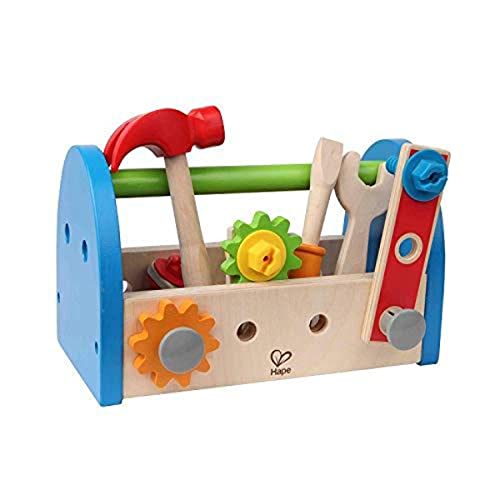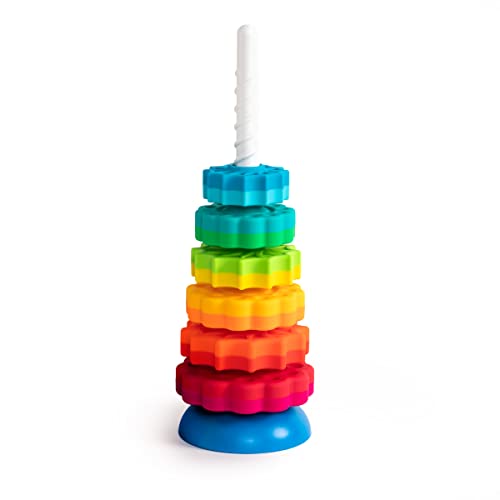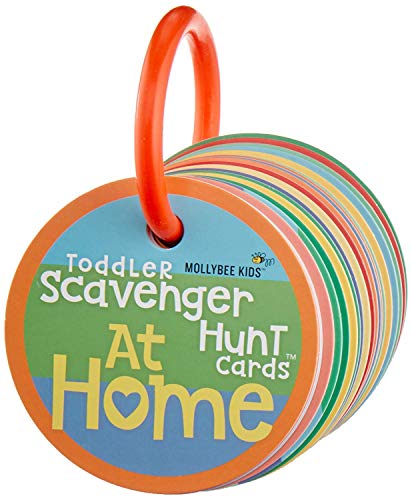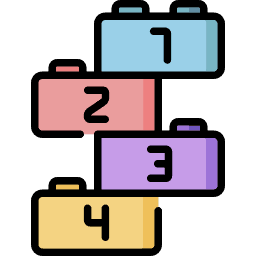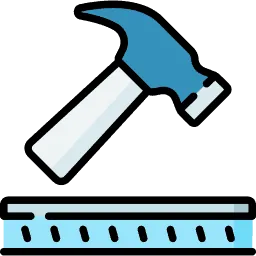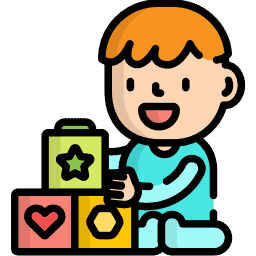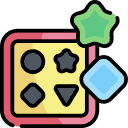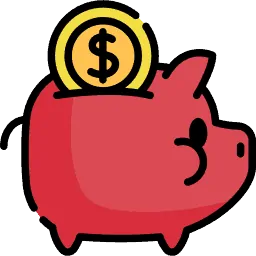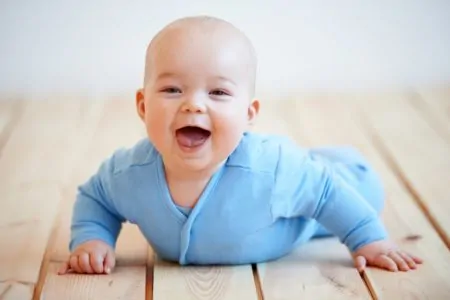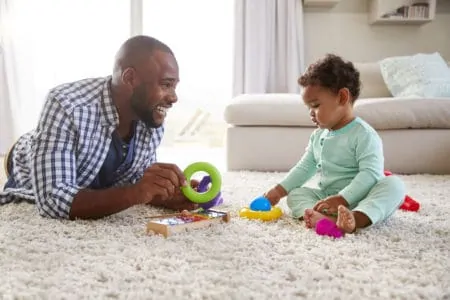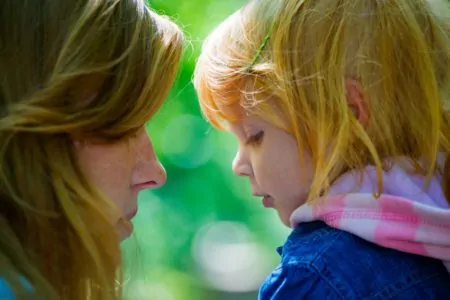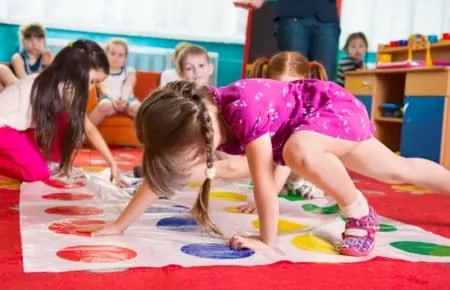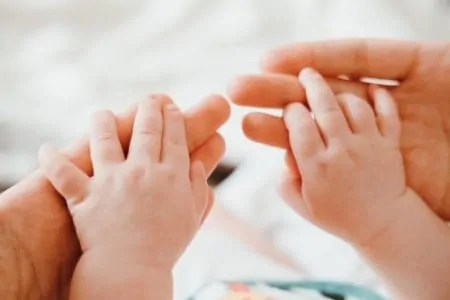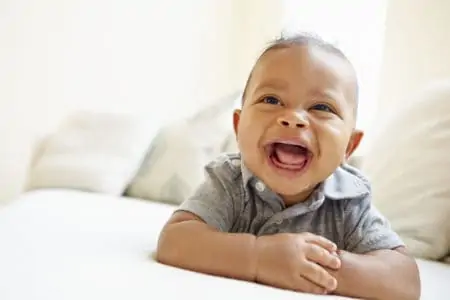By the time they are two years old, most toddlers have developed a vocabulary of about 50 words (1). You can help this learning process by choosing toys that actively promote language development.
But which toys help toddlers talk?
We’ve combined the knowledge and experiences of the Mom Loves Best team, advice from speech and language professionals, and a slew of reviews from real-life testers. The result is this guide to the best toys to help toddlers talk.

- 17-piece music toy set
- Includes free storage backpack

- Bright and colorful design
- Comprehensive accessory set

- Includes can packs & basic tools
- Comes in many different themes

- Includes 3 floors & 12 rooms
- Folds up for easy storage

- For role & pretend play
- Foldable, portable and adorable

- 14-piece wooden toy set
- Kid-friendly materials

- Open concept design
- Includes 22-piece accessory set

- For nesting & stacking
- Has animal characters on the bottom

- 100-piece felt board set
- Includes a storage bag

- 6 stack-up-any-way discs
- Coated, BPA-free plastic
The Best Toys to Help Toddlers Talk of 2023
With options that include turn-taking, noise imitation, and different forms of speech and language, these are our favorite toys to help toddlers talk.
Stoie's International Wooden Music Set for Toddlers
Best Musical Toy
Recommended age: 2 years+
These instruments can encourage your child to make a range of sounds even if they cannot yet form words. Banging things with the drumsticks and saying “bam bam” or hitting the triangle and saying “ting ting” are skills that progress toward healthy speech.
You can also help your child recognize the rhythms of speech and the sound patterns of words by hitting different notes on the xylophone as you say a phrase. Play the same notes again, and encourage your child to repeat your phrases or go high to low in tone.
Plus, there’s singing, leaving pauses for your child to fill in the blanks in songs, and so on. For example, Sing “Twinkle, twinkle, little…” and pause, giving your child the chance to fill in the blank with “star.”
Playmobil 1.2.3 Family Home
Best Reenactment
Recommended age: 18 months+
Playing with a toy house gives children the opportunity to reenact situations they are already familiar with. You can ask your toddler to show you how the baby gets ready for bed, how they have dinner, etc., and then have them tell you what’s happening.
You can also leave your toddler to play without direction, then “drop in” and ask about what’s happening.
This house is also compatible with other Playmobil 1.2.3 toys, so you can add other people, animals, or vehicles to enhance play opportunities.
Play-Doh Fun Tub Playset
Best Open-Ended
Recommended age: 3 years+
You can sit down at the table with a tub of Play-Doh, make items, and ask your child to name them or tell you about the shapes and colors, But there’s so much more you can do with Play-Doh.
We’re fans of making creatures then acting out stories with them as it encourages kids to make animal sounds, play out different scenarios, and tell you about what is happening. You can also make items and create a story together, practicing taking turns as you do in conversation.
KidKraft Everyday Heroes Wooden Playset
Best for Emergency Vehicles
Recommended age: 3 years+
This playset is particularly appealing for children who love emergency vehicles. It also provides wider opportunities for play and speech beyond the simple fire truck or police motorcycle.
Once you have your child “hooked” on the emergency theme, there’s an extensive range of scenarios to explore.
You can “take the call” at the dispatch desk, then relay details to the emergency peeps, encourage your toddler to have the emergency personnel communicate, and so on. Plus, because this is an oversize playset, your child will move around while they play.
Battat – Big Red Barn – Animal Farm Playset
Best for Prepositions
Recommended age: 18 months+
The Battat farm toys present primary sound and storytelling possibilities. Plus, this particular farm set is an excellent choice for practicing the prepositions “in,” “out,” “on,” “up,” “off,” and more.
Ask your toddler to give you instructions about where to put the animals using “in, out, up, on, off,” etc. On some occasions, do as they ask, and on others, “accidentally” place the animal in the wrong spot. Your toddler will then be eager to tell you you’re wrong and repeat their instruction.
Hape Fix-It Tool Box and Accessory Set
Best for Imitation
Recommended age: 3 years+
Having a toolset provides ample opportunity for you to spend time speaking with your kiddo, chatting as they “help” you fix things around the house. Ask questions such as: “What do you think we should do next?” “Which tool shall we use?” and “What sound will this make?”
Set up verbal routines such as “Ready… Set… BANG!” which you can repeat at regular intervals throughout your play. These routines also allow you to use expectant pauses. In this case, you would say, “Ready… Set…” and pause so your child can say, “BANG!”
Step2 Crazy Maze Ball Pit Playhouse
Best for Active Words
Recommended age: 18 months+
Playhouses help develop the social aspects of speech and language, such as turn-taking, sharing ideas, and giving and taking instructions.
In addition, like a smaller toy house, a large playhouse allows children to reenact situations they have experienced or are familiar with. However, unlike a smaller toy, a large-scale playhouse also encourages lots of active play.
This playhouse has balls, chutes, and tubes to inspire plenty of running, jumping, climbing, and other physical activity. It also provides opportunities to use a range of movement-inspired vocabulary like “jump,” “throw,” catch,” and “roll.”
Rainbow Nesting and Stacking Cups
Best Back-to-Basics
Recommended age: 6 months+
These stacking cups are suitable from an earlier age than most toys on this list because they are suitable for teething babies.
That makes them an ideal toy for helping toddlers talk because even if your little one is delayed in other areas of development, these cups are still safe, engaging, and physically suitable for play.
You can play the apparent games like building a tower, but there are other options such as hiding an item under a cup and asking your child to guess what item is hidden or which cup it’s hidden under.
Faber-Castell My First Fun Felt Shapes
Best for Travel
Recommended age: 3 years+
Toddlers can use these felt shapes to create pictures or scenes. You can then prompt them to tell you about their creations. If they’re reluctant or unable to verbalize much, you can say what you think is happening and ask them if you are correct.
We’ve found these shapes are helpful for recreating the action in favorite storybooks and encouraging our kiddos to tell us the story. A favorite game in our home is to have one person make pictures and the other guess the story.
Fat Brain Toys SpinAgain Kids Stacking Toy
Best for Speech Stimulation
Recommended age: 12 months+
Each piece that goes onto this stacking toy has two colors and is either a flower shape or a star. This provides lots of opportunities to repeat the same words over and over while you ask your child which pieces they would like and wait for them to speak.
You can also encourage your child to make sounds like “Whee” as the discs spin down the pole.
Step2 Rain Showers Splash Pond Water Table
Best Sensory
Recommended age: 18 months+
For kids who enjoy playing in the water, a water table is incredibly motivating. This example has many accessories with which your child can create character stories, pour water, and play anticipatory games.
For example, you can hold a cup of water, count “one, two, three,” pause, and wait for your child to call out “GO!”
Learning Resources Serve It Up! Play Restaurant
Best for Social Preparation
Recommended age: 3 years+
You can encourage your child to be the server, come to you, and ask what you would like to eat. This provides lots of scope for asking questions about the food or enquiring about your server’s recommendations. For example, you could ask your child, “What do you think I would like?” Your child can then get your food, serve it up, ask if you like it, etc.
Then you can reverse the roles, so your toddler is using a different set of vocabulary.
You can also supplement this set with other food playsets and create your menus by drawing pictures of the food.
Mollybee Kids Toddler Scavenger Hunt
Best Low-Pressure
Recommended age: 2 years+
A simple set of cards on a ring, this toddler scavenger hunt provides simple questions to ask your child and everyday household objects for them to find.
You can then encourage your little one to tell you what they are looking for, where they found an item, or where they will search next.
This toy has the added advantage of being small and portable, so you can take this and play wherever you go.
Little Kids Fubbles No-Spill Bubble Tumbler
Best for Oral Motor Development
Recommended age: 18 months+
Blowing bubbles may not provide as much scope for trying out different words as some of the other toys on this list. Still, this activity is excellent for exercising the muscles necessary for effective speech.
For developing the oral muscles that help toddlers talk, it’s essential to stick with the bubbles you blow rather than bubble machines that do the blowing for you.
PicassoTiles 100 Piece Set Magnet Building Tiles
Best for Building Words
Recommended age: 2 years+
With these magnetic tiles, you can build a wide range of buildings, vehicles, and 3D structures, and you can also make pictures, patterns, and other 2D displays. And since these tiles are magnetic, you can use them on fridges, baking trays, and other metal surfaces.
You can use the magnets to talk about colors and shapes, and there are add-on sets with figures, vehicle bases, and more.
Fisher-Price Laugh & Learn Piggy Bank
Best Electronic
Recommended age: 6 months+
This piggy bank comes with ten large, sturdy coins, each of which is a different color. The coins also have numbers and shapes embossed on both sides, giving you a wide range of vocabulary from which to choose.
Count the coins going into the bank, and count as you take them out. Play matching games such as saying, “The blue coin has the…” and wait for your child to say the shape before dropping the coin into the bank.
Pet Vet Play Set with See and Spell
Best Two-Toy Bundle
Recommended age: 18 months+
A doctor or vet set places your child in the nurturing role, allowing them to give care rather than receive it. This role reversal can help make kids feel more in control and build their confidence, which can help them to feel more positive about their ability to communicate.
This vet set from Mellissa & Doug comes with a cat, a dog, and a range of vet “tools.” There’s lots of scope for playing together and asking questions like “Who is hurt?” “What’s wrong?” and “What should we do?”
Then there’s the See and Spell set which provides the opportunity to spell out the words and focus on the sounds of individual letters.
Kids Gardening Tools and Story Book
Best Outdoor
Recommended age: 18 months+
Gardening together creates a relaxed atmosphere while practicing communication. Planting seeds and watching them grow can also be an incredible motivator.
This gardening set has gloves, tools, a tote, and a gardening storybook, so you can practice the same word while in the garden during activities or inside when reading together.
Slice and Stack Sandwich Counter
Best Question and Answer
Recommended age: 2 years+
The printed “make a sandwich” graphic at the top of the sandwich counter is excellent for teaching how to do things, including speak, in a logical, standard sequence.
We also love the simple question and answer possibilities: “What would you like?” “How many slices?” “Bread slice or roll?” “Who likes lettuce?” Plus, you can adapt these questions to require straightforward answers initially, then more complex answers as your child’s speech skills grow.
You can play with this toy at home and then visit a sandwich shop to practice your word skills in real life.
Wonder Forge Disney Classic Characters Matching Game
Best Multiple Possibilities
Recommended age: 2 years+
Use a small number of pairs to play the memory matching game for younger players and add elements such as saying “hot, hotter, cold, or colder” as your child’s hand hovers over a card. Then encourage your child to do the same to help you on your turn.
We like to hide the cards around the room and enjoy a scavenger-hunt-style game where the kids call out the cards they find and where. They have to listen for other people calling names and cards and work on calling them out for others.
How to Choose Toys to Help Toddlers Talk
When choosing toys to help a toddler talk, keep these things in mind.
Other Ways to Help Your Toddler Talk
In addition to the toys and tips above, these are other ways to help your toddler talk.
Ask Open Questions
Rather than asking things like “Are you hungry?” which your child can answer with a single word or a nod or shake of the head, ask questions such as “What shall we have to eat?” This type of question requires more verbal effort and variety and will help develop speech and social skills.
Know What to Expect
Speech requires a complex combination of brain, muscle, nerve, and larynx interaction, so toddlers develop their speech skills a little at a time. Stick with helping your toddler work on age-appropriate sounds (4).
Look for Opportunities
Talk to your child, and encourage them to talk to you at every possible opportunity. For example, when you’re at the store, ask your child questions about which aisle to go down, what’s down that aisle, and who likes the food you find there.
It’s Not All Talk
Choose activities that practice non-verbal skills, making mouth shapes or other elements of speech and language. Here are some examples:
- Making animal sounds, or the sound of trains, planes, and automobiles.
- Singing.
- Playing games that work facial muscles, such as blowing bubbles.
- Turn-taking in games.
- Having fun making random funny faces and sounds.
Avoid Pressure
Some children with speech delays can feel intimidated or overwhelmed if they feel like they have to “perform.” Avoid asking your child to say specific words, and instead, play games where these words occur naturally.
When to See a Doctor
Roughly one in five kids will experience a speech delay (5). Some delays are temporary, and your child might catch up naturally or with a little extra encouragement at home. However, more significant speech delays have a much better outcome the earlier a child receives help.
If you’re worried about your toddler’s speech and language development, check the standard milestone charts. If your child has passed the upper age limit of a milestone, check in with your healthcare professional. It’s better to discover there’s nothing wrong than to delay treatment.






